Abstract
Aspartate transcarbamoylase (EC 2.1.3.2) from Escherichia coli contains six zinc ions per molecule. Renaturation studies of this allosteric enzyme and its isolated subunits show that the metal binding site is in the regulatory polypeptide chain. Ultraviolet difference spectra of the cadmium and zinc derivatives have been used to show that the sites in the isolated subunit and the full enzyme are similar. Results with an apo derivative of the regulatory subunit suggest that the metal is not required for the binding of the feedback inhibitor, but that it is involved in the structural stability of the protein. A close relationship between the reactivity of the cysteine residues in the regulatory subunit and the metal ion has been found.
Full text
PDF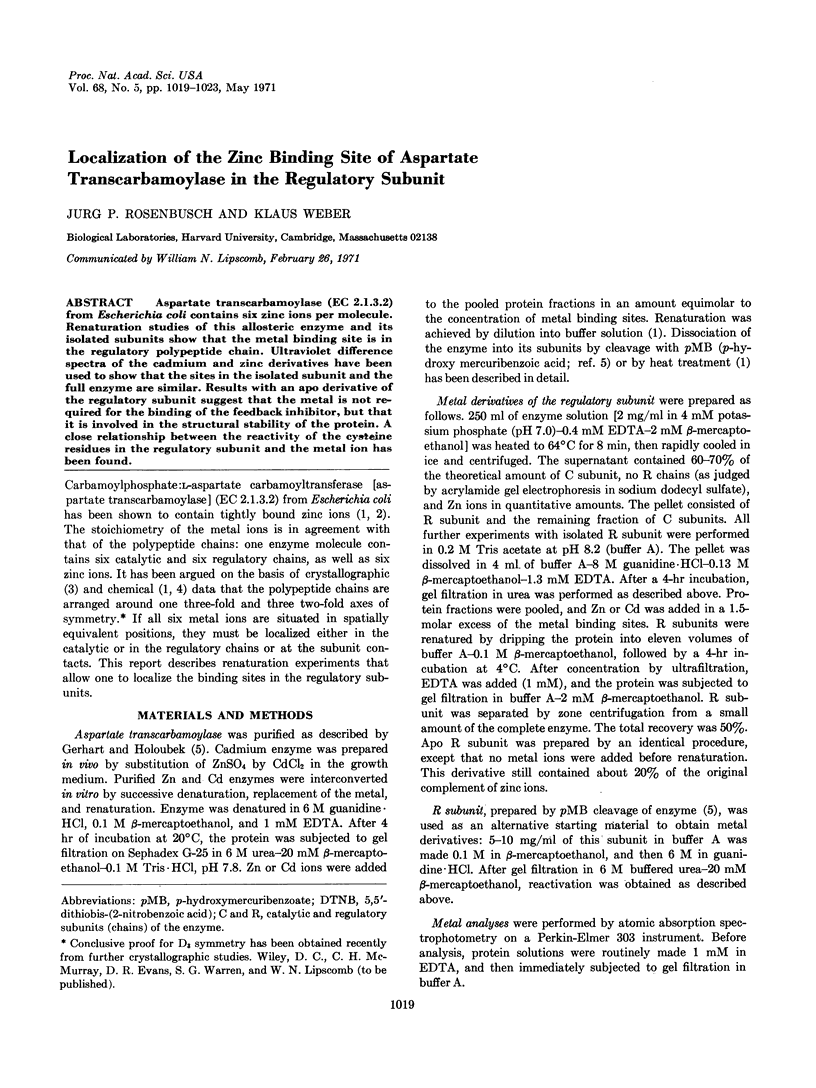
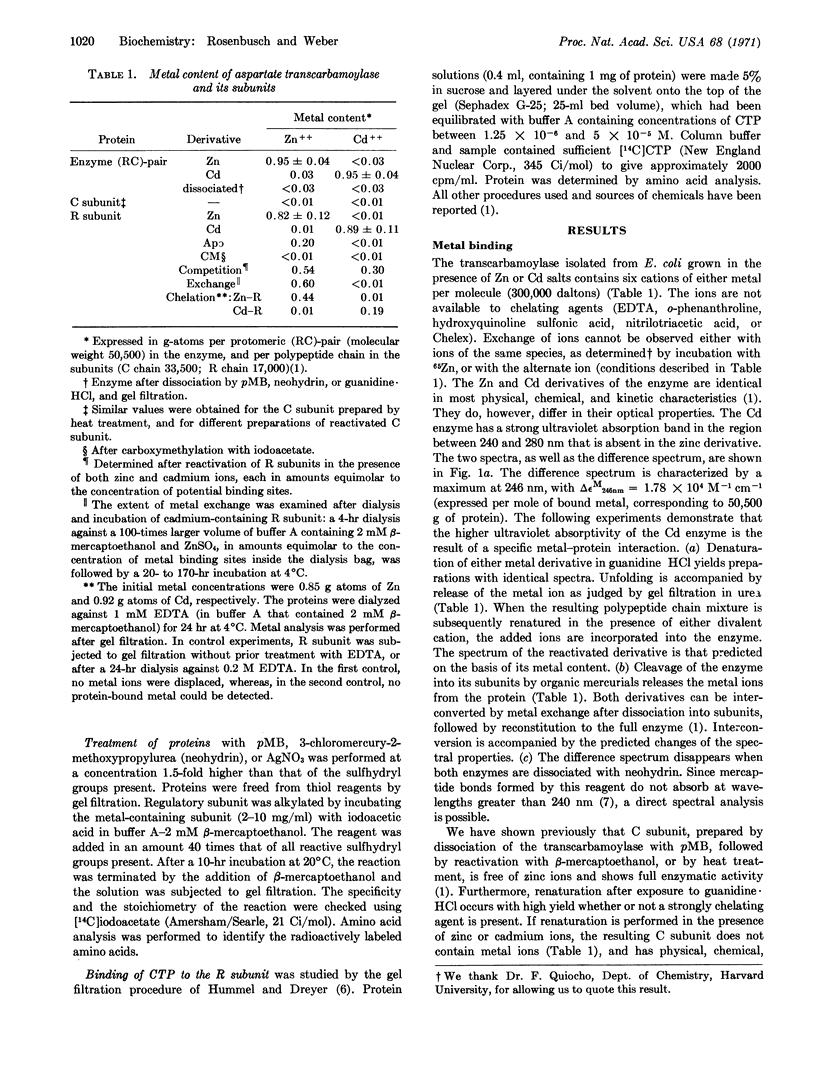
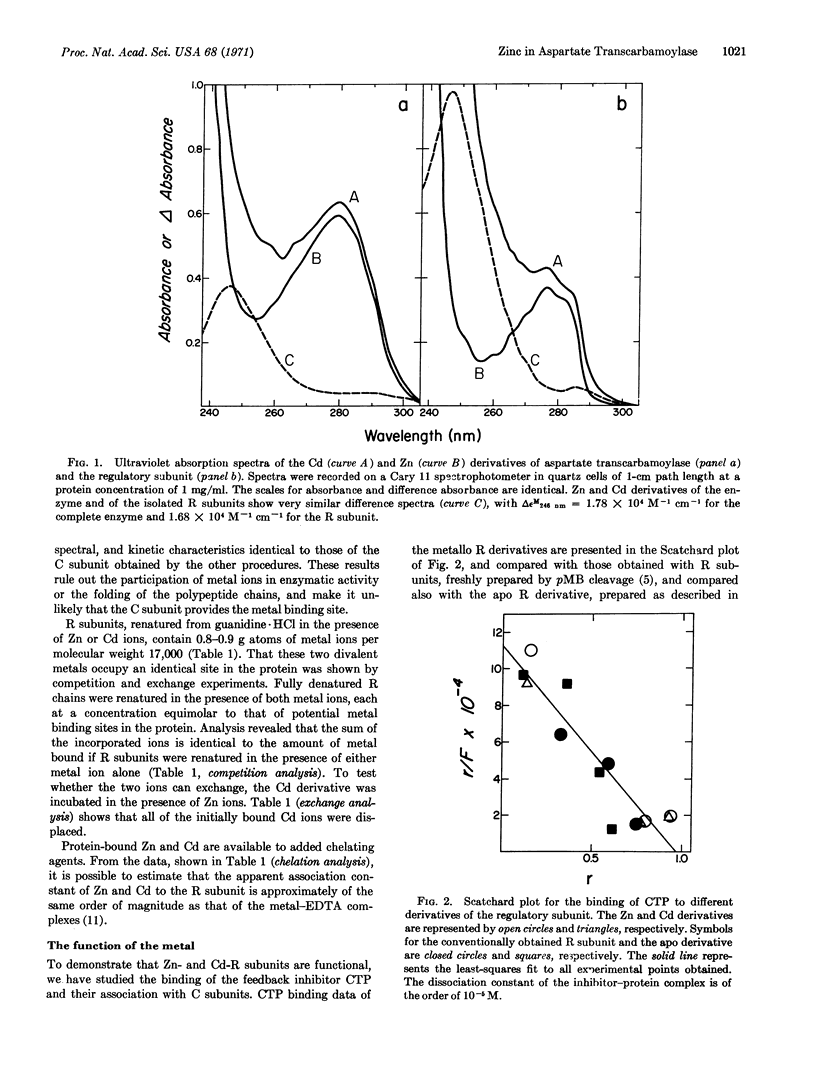
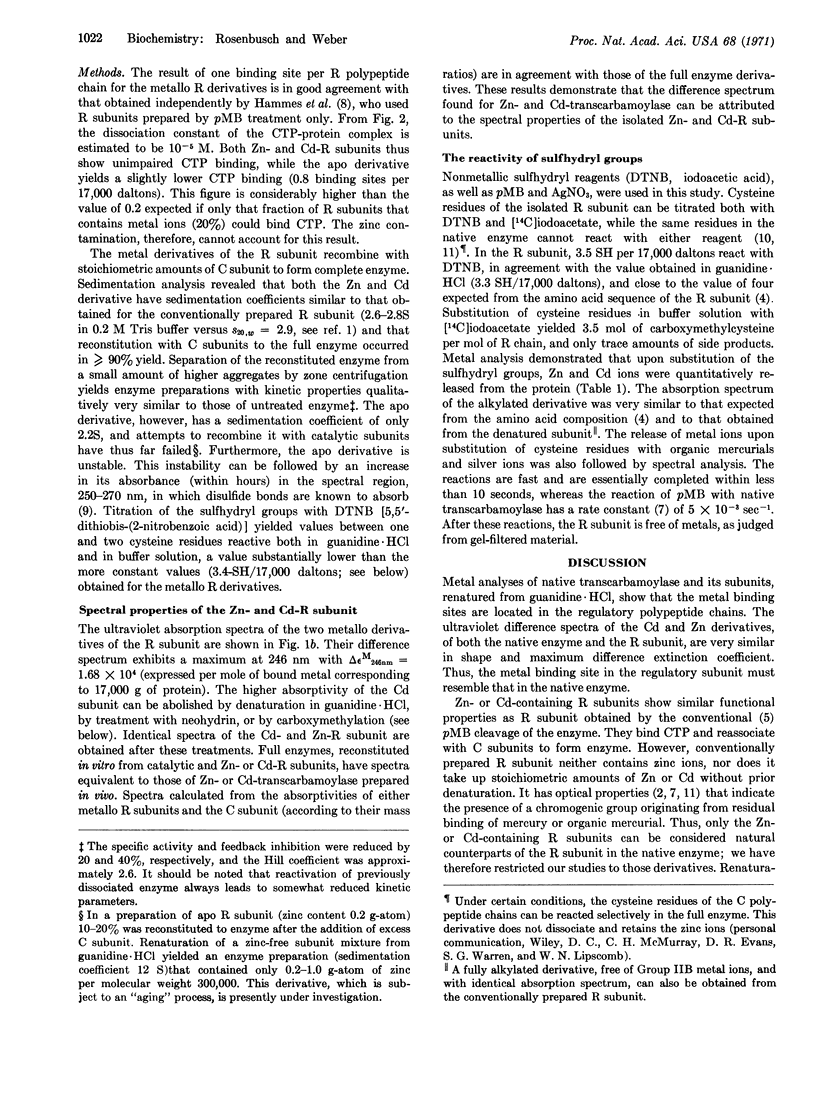
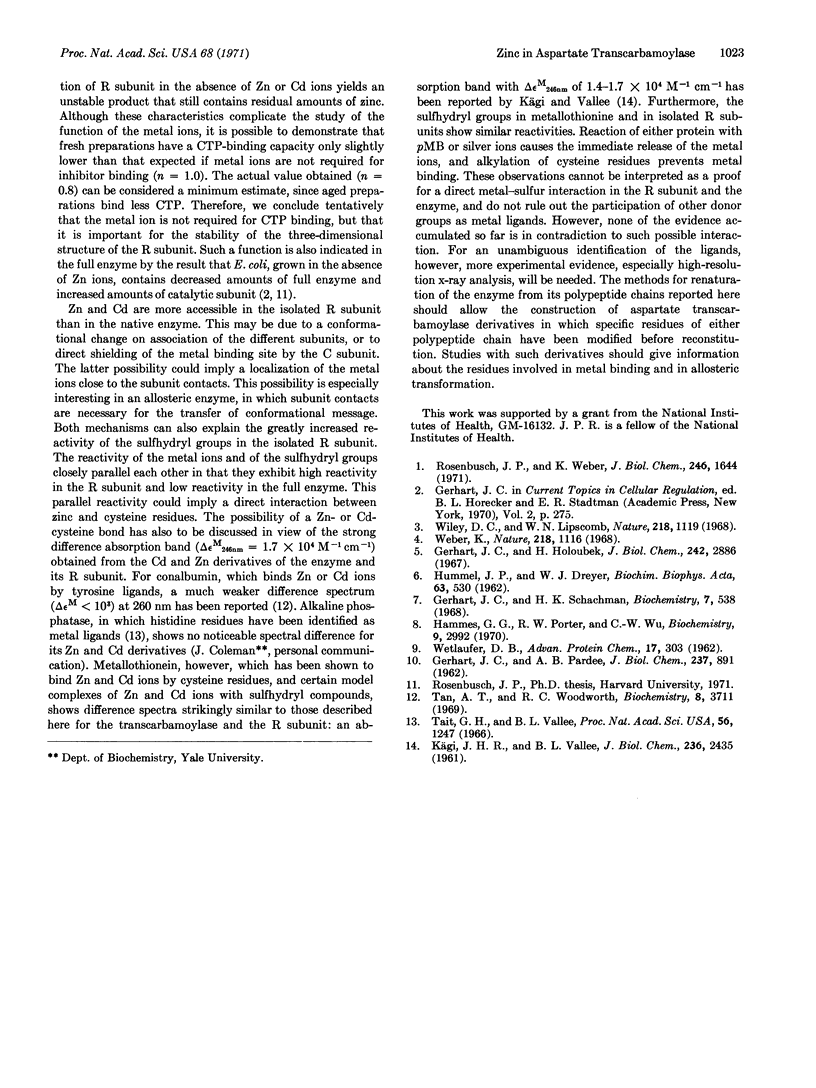
Selected References
These references are in PubMed. This may not be the complete list of references from this article.
- Changeux J. P., Gerhart J. C., Schachman H. K. Allosteric interactions in aspartate transcarbamylase. I. Binding of specific ligands to the native enzyme and its isolated subunits. Biochemistry. 1968 Feb;7(2):531–538. doi: 10.1021/bi00842a007. [DOI] [PubMed] [Google Scholar]
- GERHART J. C., PARDEE A. B. The enzymology of control by feedback inhibition. J Biol Chem. 1962 Mar;237:891–896. [PubMed] [Google Scholar]
- Gerhart J. C., Holoubek H. The purification of aspartate transcarbamylase of Escherichia coli and separation of its protein subunits. J Biol Chem. 1967 Jun 25;242(12):2886–2892. [PubMed] [Google Scholar]
- HUMMEL J. P., DREYER W. J. Measurement of protein-binding phenomena by gel filtration. Biochim Biophys Acta. 1962 Oct 8;63:530–532. doi: 10.1016/0006-3002(62)90124-5. [DOI] [PubMed] [Google Scholar]
- Hammes G. G., Porter R. W., Wu C. W. Determination of the number of regulatory and catalytic sites on aspartate transcarbamylase. Biochemistry. 1970 Jul 21;9(15):2992–2994. doi: 10.1021/bi00817a009. [DOI] [PubMed] [Google Scholar]
- KAGI J. H., VALLEE B. L. Metallothionein: a cadmium and zinc-containign protein from equine renal cortex. II. Physico-chemical properties. J Biol Chem. 1961 Sep;236:2435–2442. [PubMed] [Google Scholar]
- Rosenbusch J. P., Weber K. Subunit structure of aspartate transcarbamylase from Escherichia coli. J Biol Chem. 1971 Mar 25;246(6):1644–1657. [PubMed] [Google Scholar]
- Tait G. H., Vallee B. L. Studies on the active center of alkaline phosphatase of E. coli. Proc Natl Acad Sci U S A. 1966 Oct;56(4):1247–1251. doi: 10.1073/pnas.56.4.1247. [DOI] [PMC free article] [PubMed] [Google Scholar]
- Tan A. T., Woodworth R. C. Ultraviolet difference spectrl studies of conalbumin complexes with transition metal ions. Biochemistry. 1969 Sep;8(9):3711–3716. doi: 10.1021/bi00837a033. [DOI] [PubMed] [Google Scholar]
- Weber K. New structural model of E. coli aspartate transcarbamylase and the amino-acid sequence of the regulatory polypeptide chain. Nature. 1968 Jun 22;218(5147):1116–1119. doi: 10.1038/2181116a0. [DOI] [PubMed] [Google Scholar]
- Wiley D. C., Lipscomb W. N. Crystallographic determination of symmetry of aspartate transcarbamylase. Nature. 1968 Jun 22;218(5147):1119–1121. doi: 10.1038/2181119a0. [DOI] [PubMed] [Google Scholar]


